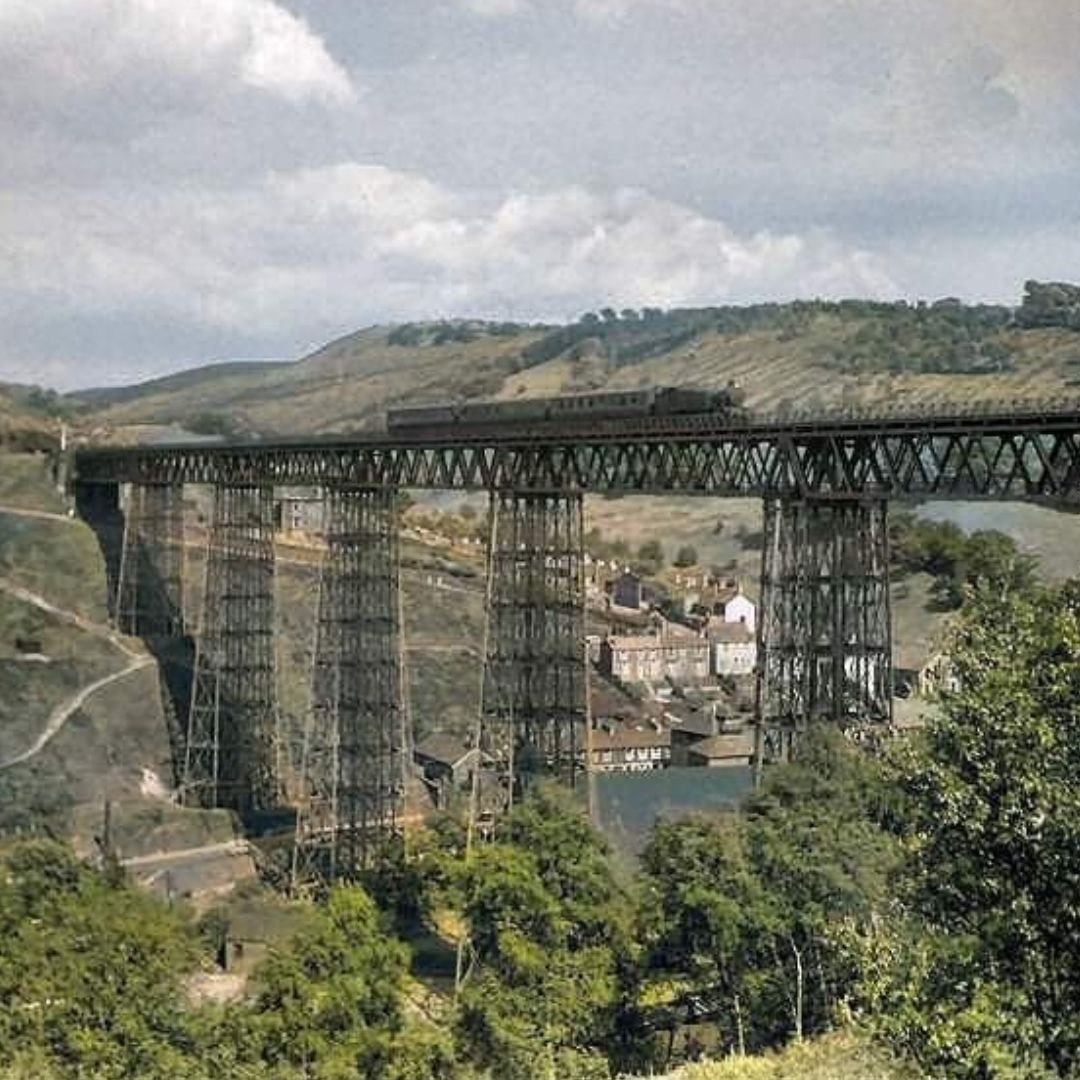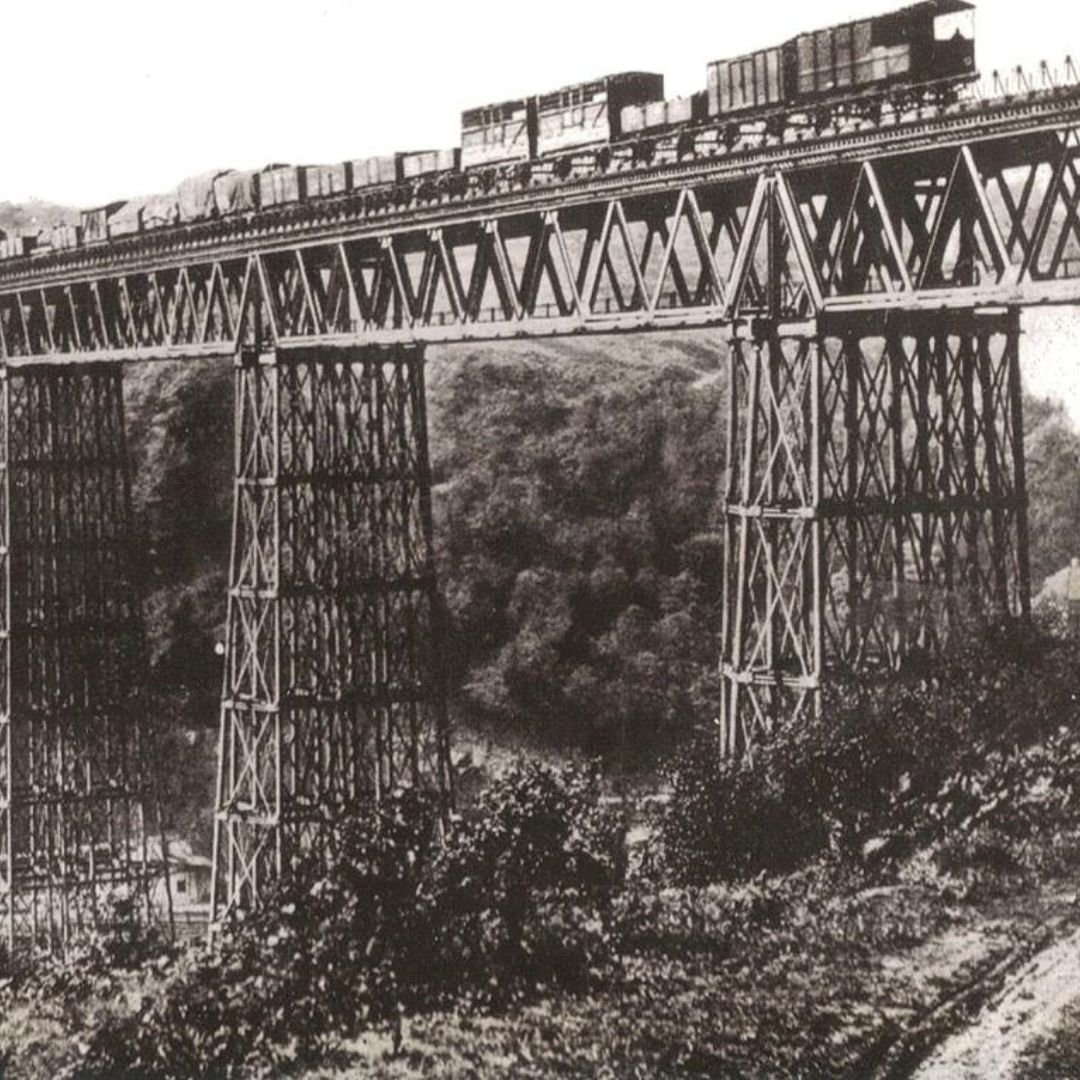Crumlin Viaduct, Wales: Demolished Architectural Gem
Crumlin Viaduct in Wales was a wonder of the industrial age and a remarkable feat of Victorian engineering.
It was famously called "one of the most significant examples of technological achievement during the Industrial Revolution".
The iconic structure was the tallest railway viaduct in Britain and the third tallest in the world.
Opened in 1857, in was built above the village of Crumlin in South Wales, across the Ebbw River.
By the middle years of the 19th century there was something of a 'coal rush' going on in Wales as entrepreneurs rushed to take advantage of the Welsh coal fields.
It had become clear that a railway line was required, to join up the Taff Vale Railway in the west with the Newport, Abergavenny and Hereford Railway in the east.
The line was to be known as the Taff Vale Extension, and Parliament gave its approval..
One of the big problems for the railway engineers was how to cross the Ebbw Valley.
Initially, a stone bridge was suggested but the technical difficulties and the vicious nature of the winds up and down this narrow, steep sided valley were too great a risk.
And so, building a bridge or viaduct made out of wrought iron was considered the thing to do.
Thomas Kennard submitted a proposal that called for a viaduct of 10 iron trusses, supported by a number of high stone piers.
The proposal was accepted and in the summer of 1853 work began - the viaduct was 200 foot high and ran across the valley for 1650 feet.
The ambitious construction took several years to complete - and it was a difficult and dangerous process.
Despite this, there was only one fatality during the whole construction process, when a girder slipped as it was being hoisted into position.
All of the iron used in the viaduct was made at the nearby works of the Blaenavon Iron and Coal Company and most of the labour came from the local area.
The viaduct was opened on Whit Monday, 1 June 1857 by Lady Isabella Fitzmaurice, with the first train crossing the bridge and entering the Bryn Tunnel in June 1854.
The construction of the Viaduct had an enormous impact on the area.
Between 1860 and 1900 workmen's homes, places of worship, a company school, shops, a hotel and a 'mutual improvement society' with library and reading room were established in its wake by contractor Thomas Kennard.
This new area, known as 'Crumlin Village,' serves as a reminder of the importance of the new bridge to the community
In 1963, however, a British Railways Report by Dr Reginald Beeching, entitled 'The Reshaping of British Railways,' proposed that many stopping passenger services should be discontinued and small stations closed.
This unpopular strategy, known as Beeching's Axe, resulted in the loss of 67,700 jobs, the shutting down of a quarter of the country's railway lines and closure of 2,128 stations.
In June 1964, the last scheduled passenger train; the 21:10 from Pontypool to Treherbert; passed over the Crumlin Viaduct.
Without a passenger service, the future of the line as part of the regional rail network became questionable,and so no major investments had been made in the line for a substantial period.
In 1962, Crumlin Viaduct was scheduled as being of architectural and historical interest by the Ministry of Housing and Local Government.
But, by 1964, this decision had been overruled by British Railways, who argued that demolition was the most sensible course of action.
Partly because the viaduct required regular maintenance even after the line had closed and partly because the structure was thought to be unsound and dangerous.
The only costs the viaduct had actually accumulated after more than a century of use were:
Maintenance costs dating back to 1866
Redecking costs from 1928
£10,000 spent on repairs in the 1950's
The expense of repainting which occurred every five to seven years.
Demolition of the Viaduct was carried out by Bird's of Swansea, specialists in dismantling steelworks and bridges.
The work was scheduled to take 9 months and began in June or July 1966 under the supervision of Brian Houston Barron.
The first piece of the viaduct to be removed was also the first piece to have been installed.
Whilst demolition was in progress, Universal Studios used the viaduct to shoot scenes for 'Arabesque,' a tongue-in-cheek spy thriller starring Gregory Peck and Sophia Loren.
Today, reacting to old photos on social media, someone said: “I drive past the site on my way to work, you can still see the abutment on the one side of the valley, it must have been an impressive sight.”
Another person added: “Travelled over it several times with my parents on the way to and from home in Shropshire to relatives in Abercynon.
“2 changes; Pontypool Road and Quakers Yard. Every time they gave me advance notice to appreciate the viaduct.”
If you enjoyed this blog post, please follow Exploring GB on Facebook for daily travel content and inspiration.
Don’t forget to check out our latest blog posts below!
Thank you for visiting Exploring GB.




















